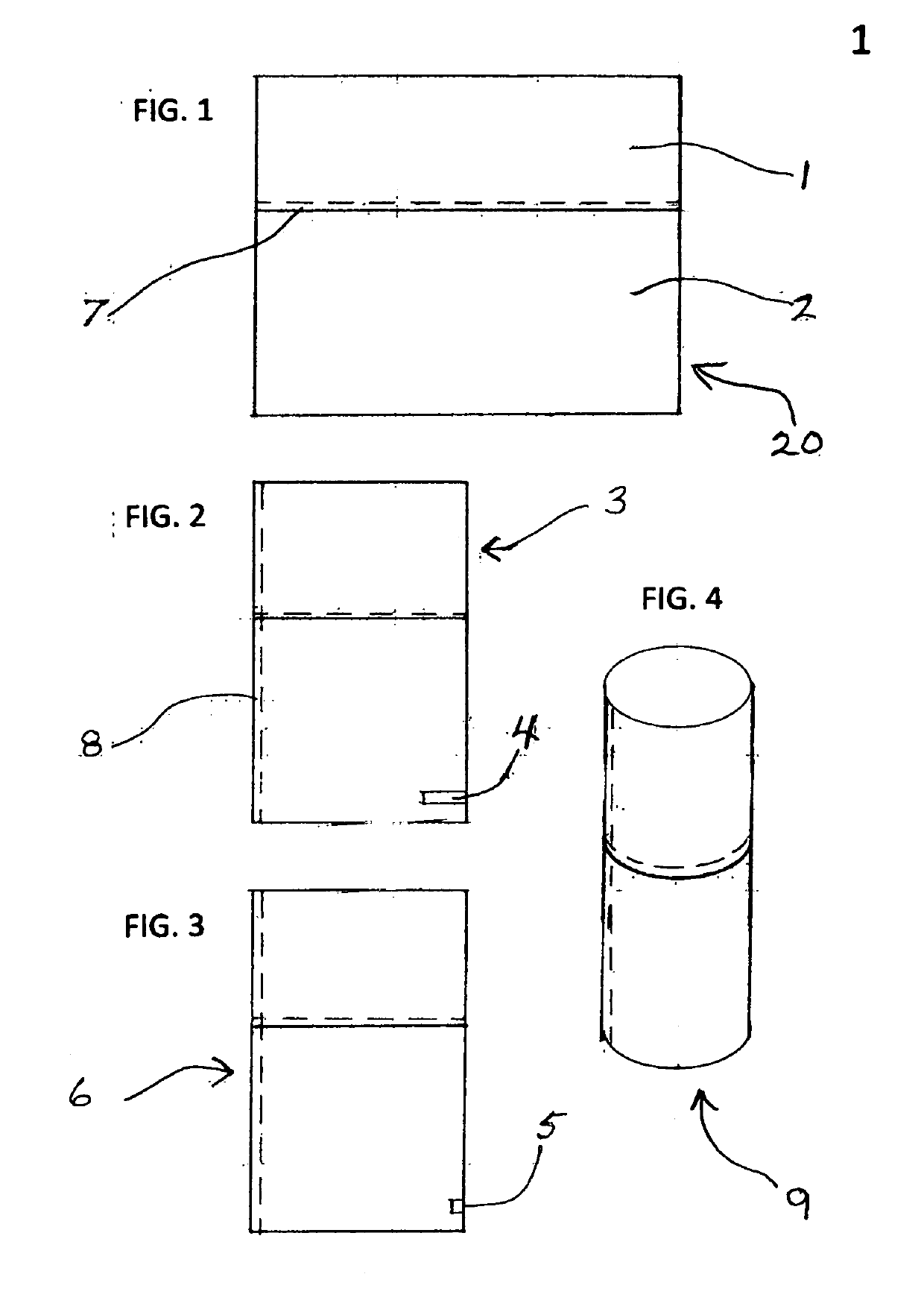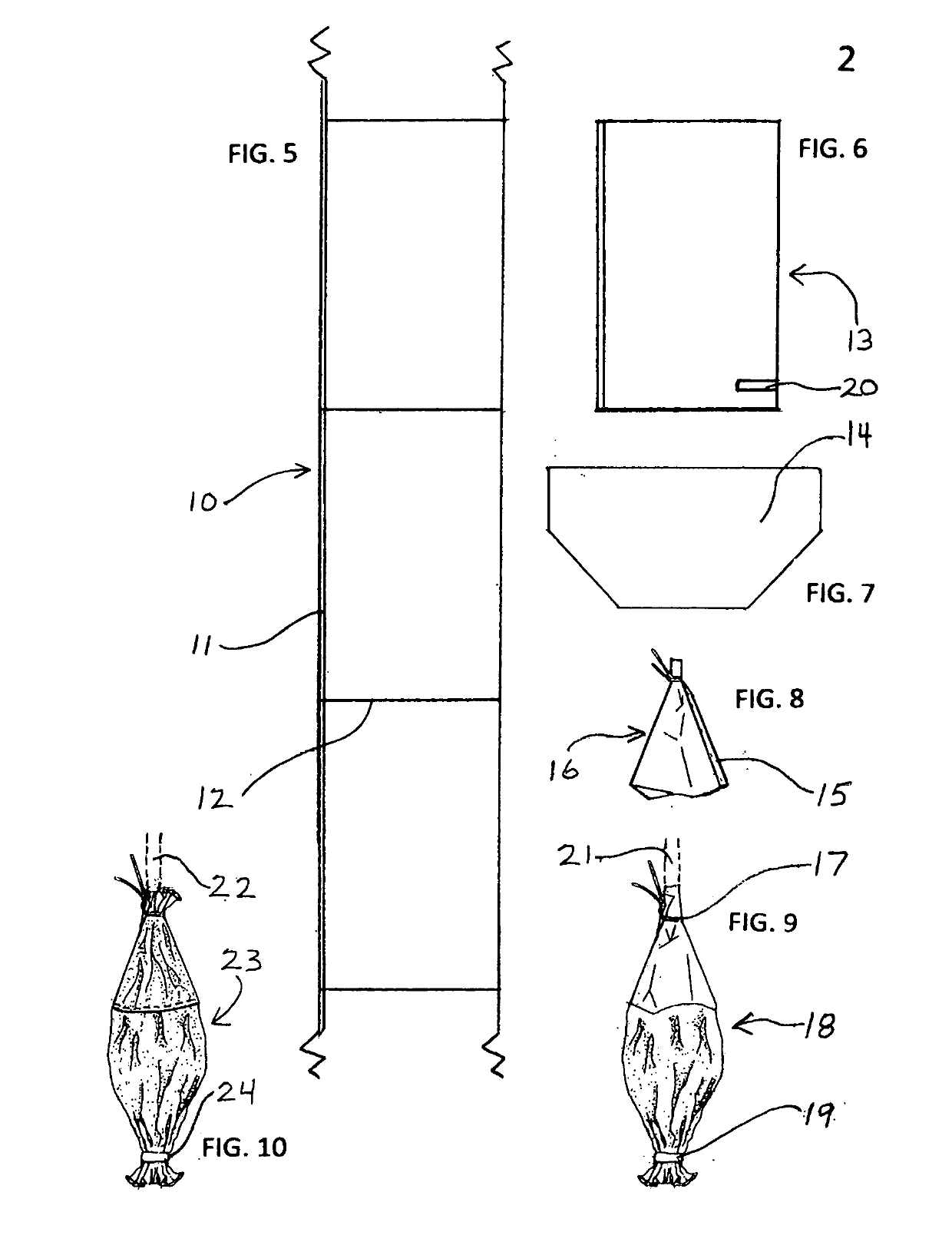Polyethylene spunbond nonwoven date-bunch covers
a non-woven, date-bunch technology, applied in the field of date-bunch covers, can solve the problems of high cost, easy disease of the flesh, and high investment cost of polyester multi-filament woven meshes, and achieve the effect of enhancing the microclimate about the da
- Summary
- Abstract
- Description
- Claims
- Application Information
AI Technical Summary
Benefits of technology
Problems solved by technology
Method used
Image
Examples
Embodiment Construction
[0019]While the present invention lends itself to embodiment in various forms, there is shown in the drawings, and will hereinafter be described, the preferred embodiment and an alternate, with the understanding that the present disclosure is to be considered as an exemplification of the present invention, and is not intended to limit the invention to the specific embodiments illustrated.
[0020]Referring now to the drawings, the preferred embodiment as shown in FIG. 4 combines two styles of polypropylene spunbond nonwoven fabric into a tube-shaped date-bunch cover 9, of which a heavy-weight, 50 gsm (1.5 oz / yd2), rainproof, UV-resistant style comprises roughly the upper 40 cm (16 in) to 50 cm (20 in) portion, and a medium-weight, 30 gsm (0.9 oz / yd2), porous style comprises roughly the lower 70 cm (28 in) to 80 cm (32 in). The cover measures approximately 76 cm (30 in) when laid flat.
[0021]Turning now to FIGS. 1, 2, and 3, the preferred embodiment is made by seaming 7 a long side of a ...
PUM
| Property | Measurement | Unit |
|---|---|---|
| length | aaaaa | aaaaa |
| length | aaaaa | aaaaa |
| vapor permeability | aaaaa | aaaaa |
Abstract
Description
Claims
Application Information
 Login to View More
Login to View More - R&D
- Intellectual Property
- Life Sciences
- Materials
- Tech Scout
- Unparalleled Data Quality
- Higher Quality Content
- 60% Fewer Hallucinations
Browse by: Latest US Patents, China's latest patents, Technical Efficacy Thesaurus, Application Domain, Technology Topic, Popular Technical Reports.
© 2025 PatSnap. All rights reserved.Legal|Privacy policy|Modern Slavery Act Transparency Statement|Sitemap|About US| Contact US: help@patsnap.com


